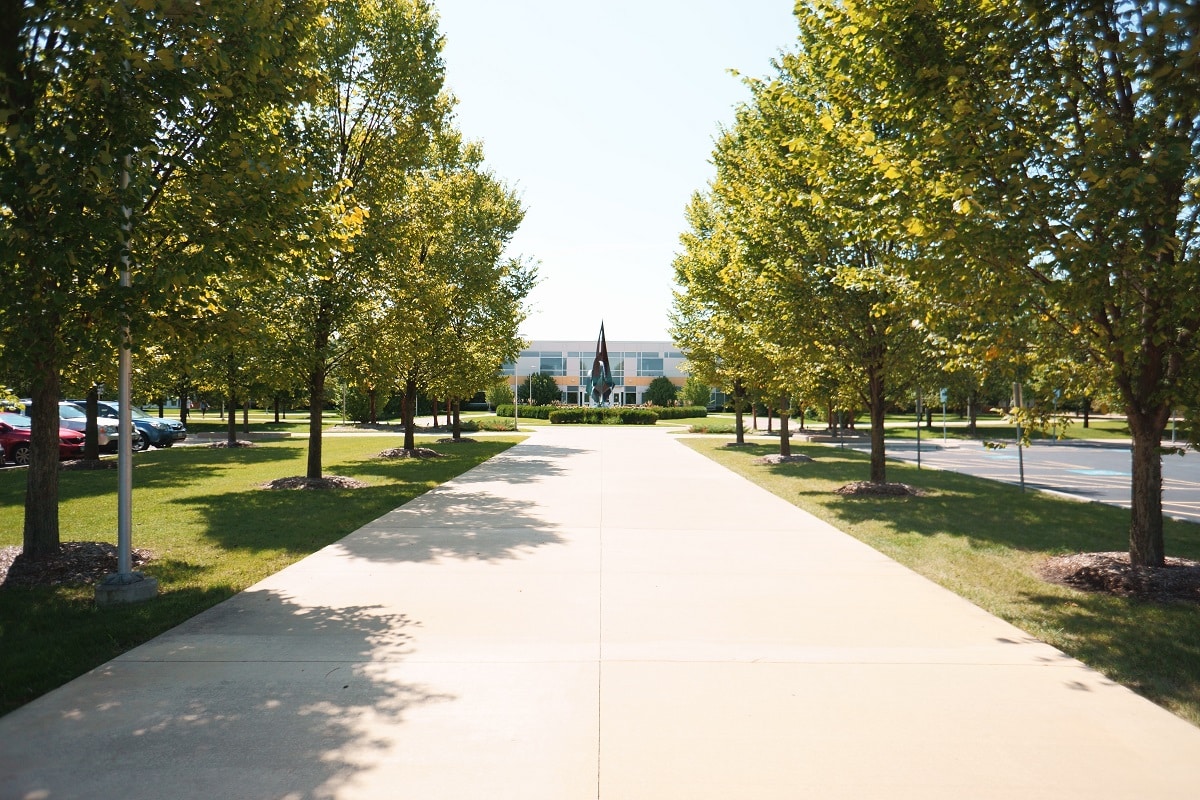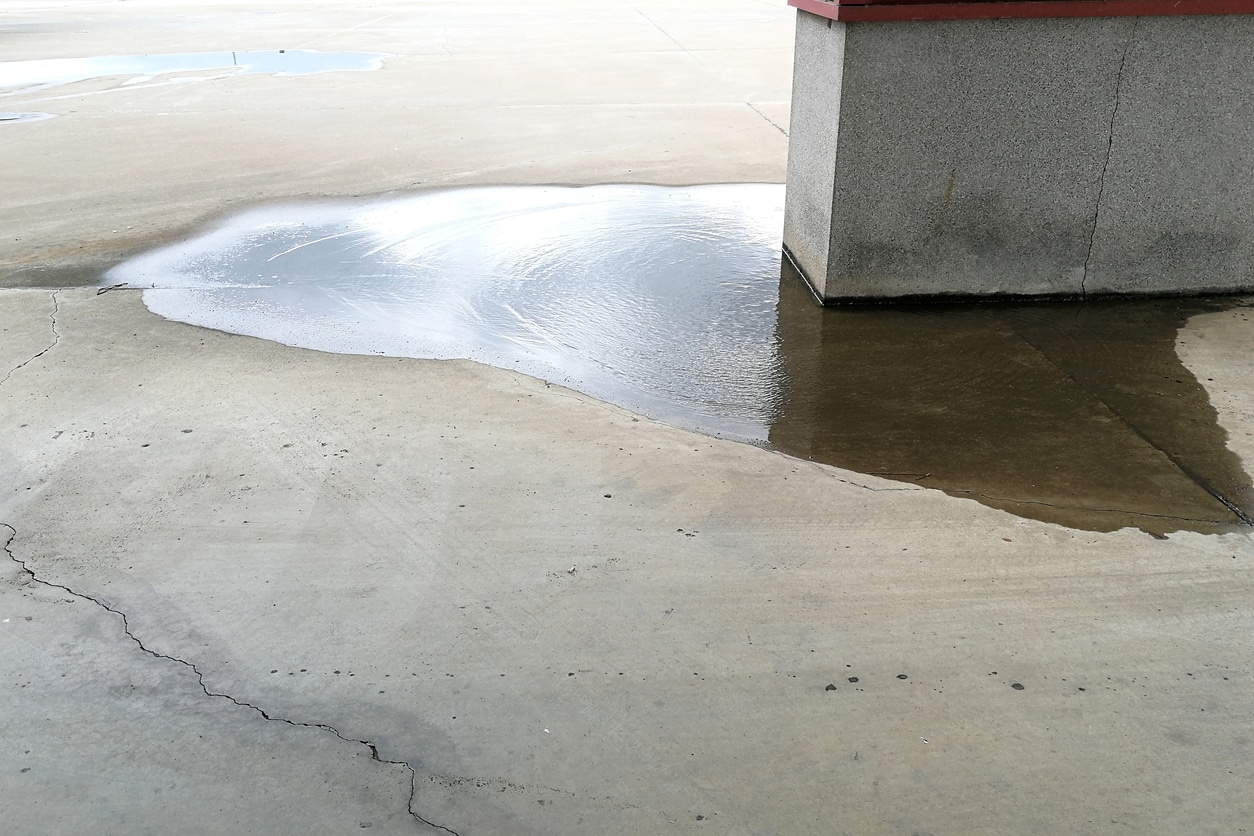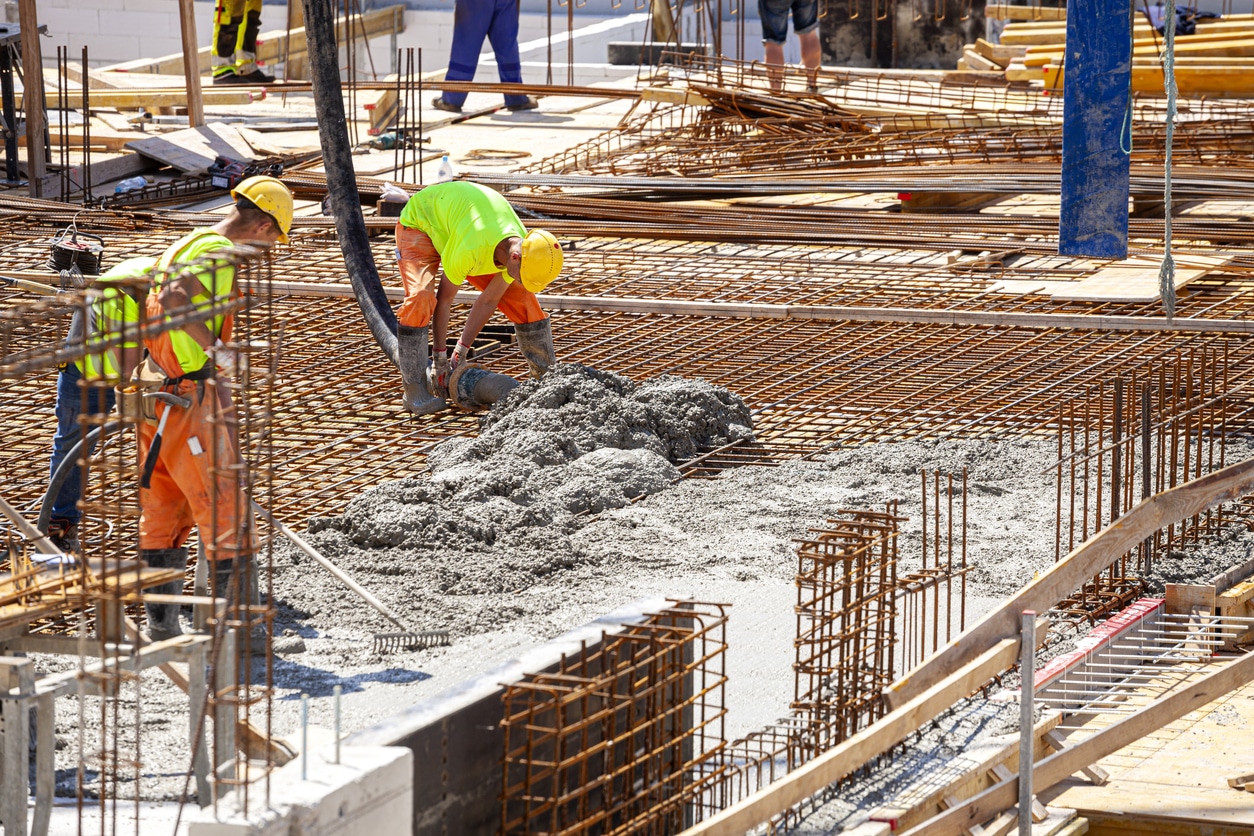Truck parking lots for commercial use must accommodate heavy loads and larger vehicles. Additionally, mixed-use…

The Impact of Having Well-designed Sidewalks Near Schools
No one can deny that children’s behavior has drastically changed over the past few years. Today, young people spend a significant amount of time in front of their laptops, flat screens, or smartphones. With the advent of communications technology and social media, a reduction in physical activity means more children are accustomed to a sedentary lifestyle. This kind of lifestyle can significantly increase the risk of diabetes, cardiovascular diseases, high blood pressure and obesity. By not getting out and interacting with others, a lifestyle dominated by television and computer games increases the chances of social exclusion, anxiety and depression.
A study published by the National Center for Biotechnology Information in 2013, noted that the physical activity of children had significant implications for their lifespan and overall skeletal health. The report said that at least an hour of exercise of the child each day, either in one session or broken into 15 or 20 minute segments, had lifelong implications. With so many new electronic gadgets attracting devoted attention, and online gaming and socializing so enticing, encouraging your children to lead an active lifestyle can be challenging. One small way you can push your children towards an active lifestyle is by encouraging them to walk or bike to school every day.
Few children choose this way to get to school. According to Safe Routes to School program, only 13 percent of children aged 5 to 14 walk or cycle to and from school, which is a significant decrease from previous decades. In 1969, statistics showed that walking was the primary mode of transport for nearly 50 percent of students.
Why do fewer students walk and bike to school?
Today, when we think of modes of transportation and how students get to school, it is most likely that we think first of the school bus service, then school drop-off by car and maybe taking a cab. The time has passed when the majority of kids walked or biked to school, even for students who live nearby. According to Safe Routes, in 2011 only 31 percent of children in grades K-8 who lived one mile of school went to school on foot or bicycle, which is a dramatic decline from 89 percent in 1972.
From unpredictable weather conditions to the perceived threats from strangers and busy roads, many reasons are given for the decline. Another is the lack of proper sidewalks next to schools. Road systems today are primarily designed to accommodate and prioritize cars instead of pedestrians and cyclists. Due to poorly maintained and incomplete sidewalk systems, parents don’t allow their children to walk to school, even if it’s only a few blocks away.
In a news report by KCUR, Jessica Andrews, a mother of four in Kansas City wouldn’t let her children walk to and from school, although it was a five minute trip. She told the news agency: “We’re really, really close. So why aren’t we walking if it’s so close? There are no sidewalks. It’s not safe for them to walk.”
According to the same news report, the street leading to school had ditches on both sides. The kids either had to walk in a ditch or the middle of the road. According to Andrews, her 11-year-old is extremely scared at the thought of walking to school. She said: “I think it’s just because of the street. She just doesn’t feel safe, and will tell you that there’s no sidewalk!”
We may not realize it, but a properly designed and well-maintained sidewalk makes a big difference to any pedestrian, with the safety and ease of access, encouraging more people to walk. In Cranberry Township in Pennsylvania, a recently-developed sidewalk had a significant impact on the lives of students and children in the area. In 2017, a short path was constructed that connected the main street to the local elementary school. According to a news report by Pittsburgh’s Action News, this small development caused a large proportion of students, who had previously taken the bus, to switch to walking or biking.
Addressing the Need of Sidewalks Near Schools
Today, many of us have the luxury of getting around by car, so can easily forget that sidewalks are a common fixture that need maintenance and incorporation into a broader network for pedestrian safety, mobility and health. With today’s emphasis on infrastructure for vehicles, in some places it is a challenge to find any sidewalk at all.
According to a January 2019 news report from ABC 6, parents in Columbus, Ohio were demanding sidewalks in their neighborhoods to ensure a safe route to school for their kids. With the existing walkways, walking to school during bad weather is particularly hazardous: “It’s a battle to find sidewalks, and if you do, it’s slippery.”
Safety for children walking or biking to school is a problem that has not been adequately addressed over the years. In 2009, 23,000 children were injured when they were struck by vehicles. This alarming rate further proves the importance of good sidewalks. With millions of students travelling to school every day, local authorities need to work with schools and police to improve safe access to schools for pedestrians.
The Safe Routes to School Program (SRTS) is leading the way in addressing the need for proper sidewalks around schools. SRTS is a federal program designed to make it safer for more children to walk and bicycle to school. The SRTS program emphasizes the importance of providing safe and efficient sidewalks that will help protect children and prevent accidents.
Fundamentals of a great sidewalk for schools
To motivate children to walk or ride a bike to and from school, proper planning the sidewalk design go hand-in-hand. The access route should provide an efficient and safe walk to school that will give the students enough space to travel separated from motor vehicles and other road traffic. When designing the sidewalk, consideration of the users means not only for students but also parents with buggies and toddlers, the elderly, pregnant women and people with mobility constraints and wheelchairs. Other factors include adequate road crossings, night lighting and street signs to indicate the pedestrian route.
The following factors help identify the right design:
Surface type
The material selected should be consistent, firm, and slip-resistant. Sidewalks can be surfaced with concrete, asphalt, crushed stones and other materials. The material chosen may be determined by budget constraints, function and durability. To minimize maintenance, concrete pavers give the sidewalk a level and durable surface that separates the school children from the traffic. Asphalt is a less expensive option but requires more maintenance.
Width
According to Safe Routes Info, the recommended minimum sidewalk width for routes to schools is five to six feet. Walking can be a time for social interaction, which is why there should be sufficient space for people to walk abreast and allow space for pedestrians coming the other way. If space is available, school routes should be more spacious for the safety of large groups of students walking to school, and that allows for cyclists to pass with ease.
Design
Aside from its primary purpose of keeping pedestrians safe and separated from motor traffic, sidewalks can also enhance the look of the school and the entire neighborhood. When designing a sidewalk, street furniture and equipment like benches, bus shelters, trees, lamps, bins, crosslights and railings will be significant additional elements for the convenience and safety of the sidewalk.
Placement
The new sidewalk should factor in the existing worn path that pedestrians have already created since this is often the most direct route, and therefore likely to be used if the new sidewalk follows a less direct course. Other factors include ensuring that the path follows a continuous and accessible route; depending on the location, the sidewalk should also be able to accommodate items for snow clearing equipment and materials during snow days.
Accessibility
A sidewalk that is part of a walking route to school should be accessible to all kinds of pedestrians: from walkers, cyclists, and most notably, pedestrians with limited mobility. An efficient and accessible sidewalk should also serve those who are in wheelchairs, pregnant women, and the elderly. In some locations, the sidewalk will also be required to provide access for emergency vehicles.
For helping students lead an active lifestyle, reducing traffic congestion, and saving money from the cost of commuting, the expense of a well thought out pedestrian walkway system makes economic and health sense. And, no price can be given to the safety of children who are walking to school.
Invest in a well-designed and safe sidewalk for your school
The availability of well-designed sidewalks near the school premises can ensure parents that their children are safe and encourage people to walk. At K&E Flatwork LLC, we offer concrete solutions for sidewalks. We are committed to delivering quality and universally accessible sidewalks for your school premises and beyond. With K&E Flatwork, you can be sure that we will give your project our full attention and quality service. Contact us today and let us pave the way for you to achieve a safe route to school.




This Post Has 0 Comments